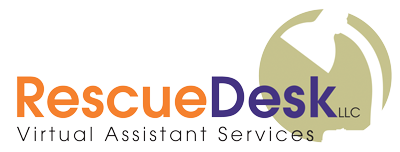CREATE A REFERRAL PLAN THAT WORKS
This post is excerpted from a resource guide we developed to help clients build an actionable referral plan. Download the guide in its entirety here.
In early 2017, we sent out an informal survey (https://www.rescuedeskva.com/resources/) and asked some of our associates, clients, colleagues, and friends about what they focus on in business. The results revealed interesting trends about how and where people find clients, what they believed their strengths and challenges were, and where they would like to be spending their time.
One area that was abundantly clear was where respondents find clients – 93% of them rely on referrals and 61% regularly attend networking events. Thanks to the lightning speed of social media and the countless options to automate sales and marketing processes, it makes sense that referrals and relationship-building would be key strategies in growing any organization of any size.
But, what we often see when working with our own clients is that developing and implementing an actionable plan to secure referrals is a challenge. Often asking for referrals or recommendations is an afterthought (if it’s a thought at all). Business owners are more focused on securing new business and don’t pay attention to the low-hanging fruit of their already raving fans.
But, like most things in business, you can utilize tools and implement systems to ask for (and track) referrals and recommendations and embed them into your marketing and sales strategies.
1. Build a Referral Toolbox
Educate and equip people to talk about your business. Provide the tools to easily rave about you. Nothing is worse than missing an opportunity because you’re caught flat-footed when someone unexpectedly tells you how awesome you are. Create a toolbox so you’re always ready.
2. Create a checklist to identify ideal referral partners
A lot of us get “accidental” referrals. We do a great job for a client or have a great meeting with a prospect then, out of the blue, we’re recommended to one of their associates. That’s great, but consider how much more impactful it would be if you did it on purpose. By knowing what customers you want to attract, you have the power to be more intentional in getting recommendations that will allow you to showcase your product or service to ideal clientele.
3. Test and Measure Referrals
If you invested time and effort in creating a formalized system to embed referral marketing into your strategy, you should be able to test and measure your efforts.
4. Testimonials and Recommendations
In some cases, it just isn’t possible to get a formal, personalized introduction to a potential new customer. Instead, make it easy for people to provide general testimonials and recommendations that can be used on social media, on your Website, and as part of your general marketing.
5. Make it part of your current client lifecycle
If you do nothing else, do not forget to ask for referrals, testimonials or recommendations from your current clients. If a customer is happy with your work, there are few reasons they wouldn’t put in a good word for you.
A final thought
None of this will help unless you’re committed to being referable in the first place. Be authentic, strive for excellence in your own work, and be self-aware. If you’re doing mediocre work for mediocre clients, or your customers must deal with your high-maintenance work style, or you have a reputation for beating vendors into submission, there’s no reason for anyone to send their colleagues and friends to you.
At the end of the day, it’s always more important to give than receive. If you’re pounding the pavement looking for referrals, you’re wasting your time if you are stingy about referring others who provide value to you and your business. Spread the love, and we all win.
